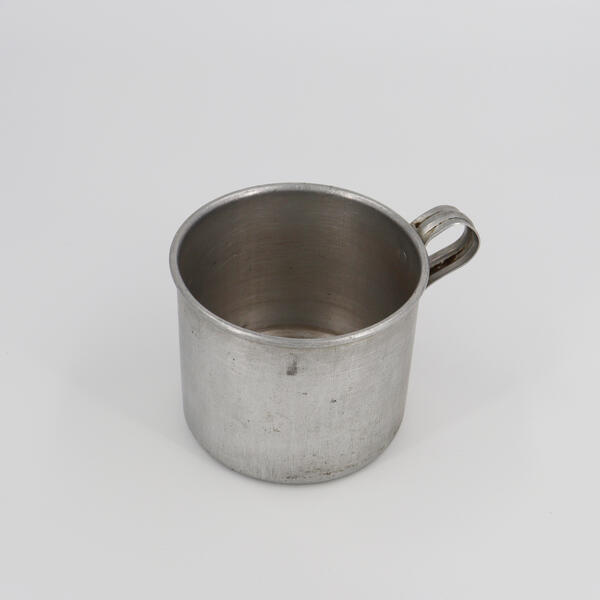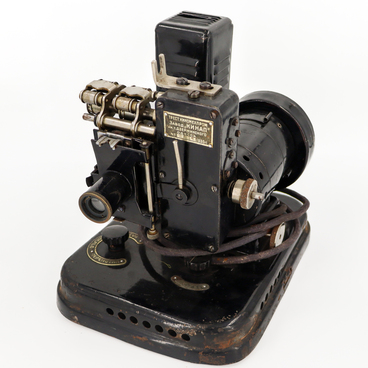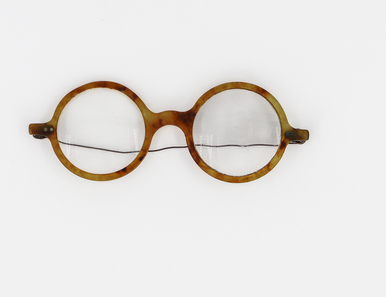A tea mug was introduced into the individual equipment of the Red Army soldiers by order of the Revolutionary Military Council on September 1, 1923. According to the standard that came out a year later, an army mug was made of Bessemer steel or sheet iron and coated with pure tin both on the inside and the outside. The mug was shaped like a truncated cone, and the upper edge had a massive rim. The diameter of the rim was 80 mm, that of the bottom was 65 mm, and the depth was 90 mm. The oval-shaped handle was made of the same material as the mug itself.
Enamelware was often used at the front, for tea among other purposes. It was made of iron and covered with white or light-colored enamel on the inside, and the outside could be enameled in various colors — green, brown, blue, and others. The volume of the mug was half a liter.
The instructions for Red Army infantry fighters indicated that the mug was to be kept next to the mess kit and spoon. To save as much space as possible inside the duffel bag, some of the food supply was placed in the mug. The enamel mug weighed approximately 170 grams.
The manufacturer’s stamp was usually placed at the bottom of the container, on the handle, or somewhere around it. As they were in great demand, the mugs were produced by many factories, for example, the Lysva Plant, the Comrade Artyom Voroshilovgrad Plant, the factories “Krasny Stampovshchik”, “Krasny Vyborzhets”, “Emalposuda”, “Krasny Metallist”, and others.
Sometimes, soldiers made mugs with their own hands, for example, from cans or metal cases left from an individual anti-chemical package IPP-3.
In the third month from the start of the Great Patriotic War, the rationing norms stated that the Red Army soldiers and the commanders of the field army combat troops received 35 grams of sugar and 1 gram of tea daily. The sugar amount for the cadets was increased by 15 grams, and they also regularly received 3 grams of ersatz coffee. Those fighters who stayed in the hospital were eligible for an additional 3 grams of real coffee.
Enamelware was often used at the front, for tea among other purposes. It was made of iron and covered with white or light-colored enamel on the inside, and the outside could be enameled in various colors — green, brown, blue, and others. The volume of the mug was half a liter.
The instructions for Red Army infantry fighters indicated that the mug was to be kept next to the mess kit and spoon. To save as much space as possible inside the duffel bag, some of the food supply was placed in the mug. The enamel mug weighed approximately 170 grams.
The manufacturer’s stamp was usually placed at the bottom of the container, on the handle, or somewhere around it. As they were in great demand, the mugs were produced by many factories, for example, the Lysva Plant, the Comrade Artyom Voroshilovgrad Plant, the factories “Krasny Stampovshchik”, “Krasny Vyborzhets”, “Emalposuda”, “Krasny Metallist”, and others.
Sometimes, soldiers made mugs with their own hands, for example, from cans or metal cases left from an individual anti-chemical package IPP-3.
In the third month from the start of the Great Patriotic War, the rationing norms stated that the Red Army soldiers and the commanders of the field army combat troops received 35 grams of sugar and 1 gram of tea daily. The sugar amount for the cadets was increased by 15 grams, and they also regularly received 3 grams of ersatz coffee. Those fighters who stayed in the hospital were eligible for an additional 3 grams of real coffee.



